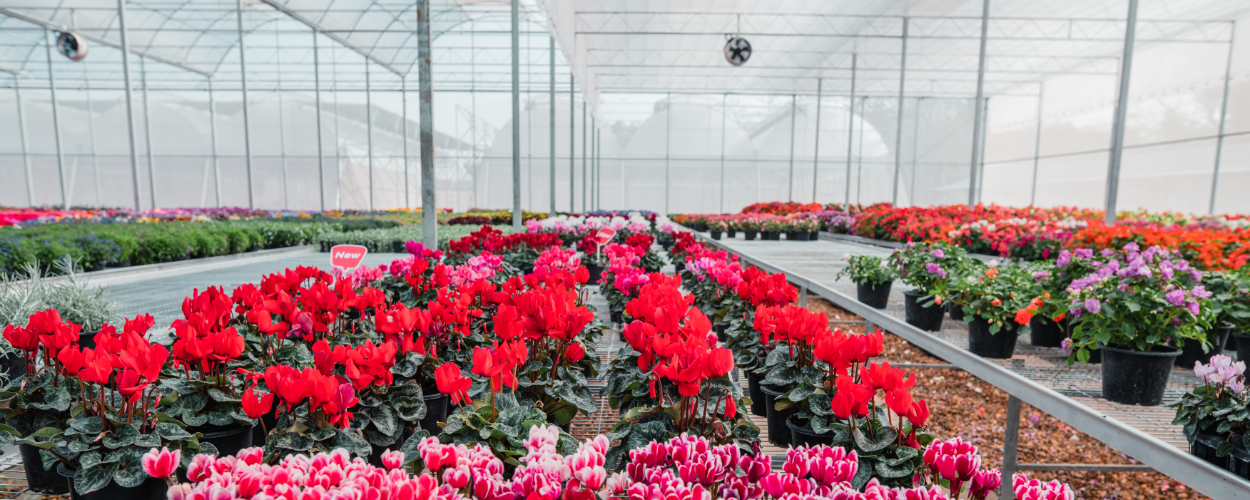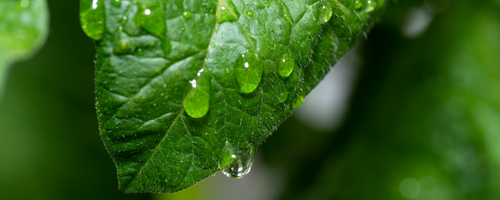
Why a perfect spring can threaten the success of your newly planted crop
/EMEA/NL/Hugo%20-%20Meet%20the%20expert.png)
Mostly we associate humidity problems with the wetness of winter or the heavy moist heat of high summer, but there’s a particular risk to greenhouse crops in the perfect spring.
You might know what I’m thinking of. Clear days. Still sometimes cold, but fresh. Spring days can be brightly lit. The sun is here, but the pre-summer rains have not yet begun. And why is it dry like that?
Why are clouds and rainfall statistically more likely in June than in May?
It’s the lack of transpiration.
The perfect spring holds a risky combination of brightness and dryness because the new growth is still getting started. There simply aren’t enough leaves.
It is the greenness and leafiness of the countryside that creates the humidity that will later spoil midsummer barbeques with showers. That riot of photosynthesis, growth pumps billions of tons of water from the landscape into the sky, via the transpiration of plants.
So, what does that have to do with creating a strong crop indoors? Doesn’t the controlled environment mean such concerns are beyond us?
Actually, not. Springtime climate conditions are very different from Fall climate conditions. Even though the temperature is moderate, please watch out. In these moderate temperatures of, say, 20 degrees, the combination of high radiation and low humidity is risky.
A young plant is acutely aware of the sudden change in the radiation level and the climate. And in this strong sunshine, it must protect itself against that low level of humidity in the air entering the greenhouse.
It has two options. It will either protect itself by closing its stomata, leading to reduced growth. Or it will develop in a more compact way.


A grower will say, what happened? Did someone hit the brakes? It can really feel that way.
I’ve also seen some growers respond to this situation by using too much shade. I visited a tomato grower in the south of Spain who had to cope with very strong Spring radiation. But this grower opted to shade with an 80% shade screen, and that resulted in a failure of the crop to set fruit. Clearly, that’s the last thing we want, so what to do? Well, I do recommend you delve into the guide we’ve put together called the "3 keys to improved greenhouse humidity."
Humidity is frequently a real challenge, and although we singled out shade and airflow, our third key is a bit of an unusual one (I’ll let you take a look and let me know what you think).
But in this strong spring radiation, my advice is not to keep this welcome growing energy out. Instead, diffuse it.
It’s really an ideal use case for deploying a diffusing screen between your crop and the slightly harsh spring light. Scattering this bright light not only moderates its tendency to burn, but also distributes its welcome energy more deeply among the lattice of leaves and stalks. The result is a stronger and happier, healthier plant. It’s a plant that is really making the most of every watt of the new sun. Isn’t that what every grower wants in a perfect Spring?
Here's to the spring.

Related articles

7 pests to exclude with insect nets (and 1 pollinator to care for) – a greenhouse grower's guide
There are seven insects you will want to keep out of your greenhouse when you’re growing in hot and arid or hot and muggy parts of the world. Most of..

When high temperatures and high humidity wakes up an ancient fungal foe
This month, just as we were planning to take a look at humidity issues, an email dropped. Roger González, of Technocampo SA in Costa Rica was getting..
